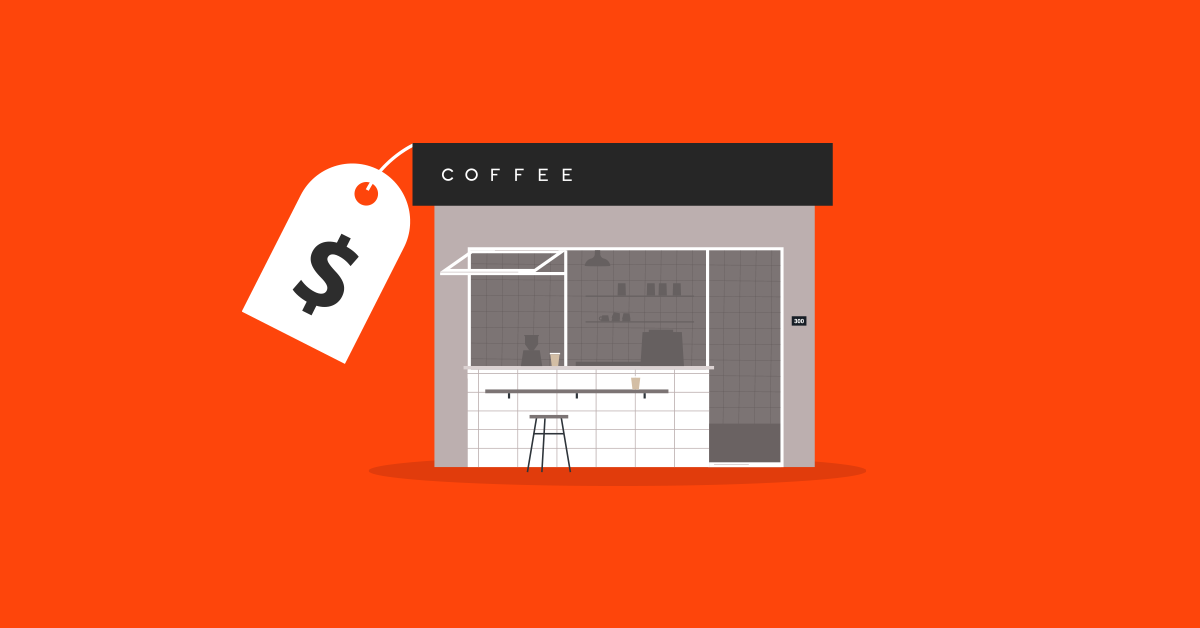
You may be so busy running your restaurant business that it’s been a while since you stopped to consider: what is my restaurant actually worth? The day may come when you decide to sell it, so just as you’d appraise a home or piece of jewelry, going through a restaurant valuation exercise is a smart business practice. Alternatively, you may be interested in purchasing a restaurant for sale but need to know if you’ll be buying it based on its true worth.
Of course, there are lots of restaurant valuation methods (you know nothing is ever simple when it comes to finances), which is why you should take a moment to decide which method is best for you.
In this article we’ll cover:
- What goes into a restaurant valuation?
- Calculating your restaurant’s valuation
- Alternative methods of restaurant valuation
7 Ways to Run Your Restaurant Smarter
This guide will walk you through the future-proof restaurant tactics that will add flexibility to your business—a key to thriving in the new world of hospitality.
What goes into a restaurant valuation?
The short answer is that there isn’t one simple, uniform restaurant valuation rule of thumb to follow. There are some parts that are more concrete, like how much your equipment and assets are worth, while other aspects are more fluid, such as the national and the local economy and your restaurant’s location. The state of the restaurant industry is also a consideration, like the fact that Americans are spending over 50% of their total food budget on restaurants.
Name recognition and reputation can come into play, such as if you own a well-established chain of restaurants, or if you own a single location. According to the National Restaurant Association, seven in 10 restaurants are single-unit operations. Another thing to consider adding to your value is your repeat customer base. With a digital customer loyalty program, you can track the rate of return guests, allowing you to point to predictable and loyal revenue.
No matter which restaurant valuation metrics you use, it’s vital that you show your work. Potential investors or buyers are going to want to know how your numbers were derived to make sure that you’re not overvaluing the business. If you’ve ever watched the TV show Shark Tank, you’ve probably seen some discussions come about when contestants have come in with a high valuation that couldn’t be backed up. The same idea applies to a real-world restaurant transaction.

Calculating your restaurant’s valuation
That being said, there are a few popular methods for calculating your restaurant valuation, as explained by Modern Restaurant Management, an online resource for restaurant professionals. Let’s start with the more simple ones.
- Income Valuation:Perhaps the easiest one to figure out, this method aims to predict how much income your restaurant will generate in the future, based on its past performance. The downside of this method is if your restaurant is fairly new, you might not have enough historical data.
- Market Valuation:While your actual profits are important when you’re using this approach, it’s more about the potential that your restaurant has to do well. Newer restaurants may choose to use this method or those that are capitalizing on a hot new trend that’s expected to take off.
- Asset valuation: This is more of an accounting exercise than the other methods since it’s based on the value of your restaurant assets, and the amount of liability you have (aka, how much debt you have). So let’s say your commercial kitchen equipment and your dining furniture is worth $100,000, but you have a business loan of $35,000, your asset valuation would be $65,000. Restaurants that want to sell quickly may go this route since it’s the simplest, but you might not profit as much.
Other methods of restaurant valuation
In addition to these simplified restaurant valuation methods, there are also more complex calculations that can be done. A popular one uses what’s called a “restaurant valuation multiple.”
Using a restaurant’s maintainable cash flow and taking into consideration how comparable restaurants operate, you can determine the cap rate (also called earnings multiples). Here are the key terms to understand:
Maintainable earnings
This is the net income that a restaurant can expect to earn on a consistent basis before depreciation, income taxes and debt service.
Cap rate
A conversion of the maintainable earnings into business value, factoring in the purchase prices of comparable restaurants or by calculating a weighted average capitalization rate, more commonly called “cap rate.” In general, a lower cap rate (in the 20-30% range) affects a higher restaurant value and a higher cap rate (30-50% range) affects a lower restaurant value.
Multiple earnings
Cap rates can also be expressed as earnings multiples. So a 25% cap rate is the same as a four times earnings multiple.
Fair market value calculation
This can be done by dividing the maintainable earnings by the cap rate (or multiplying the maintainable earnings by the earnings multiple). Here’s an example using restaurant valuation multiple, adapted from RestaurantReport.com:
With maintainable earnings of $65,000 and a capitalization rate of 25%, the Restaurant Value would be $260,000.

So what is a restaurant valuation EBITDA multiple?
If you’ve been researching restaurant valuation, you might have come across another method that’s referred to as EBITDA Multiple Valuation. EBITDA stands for Earnings Before Interest, Taxes, Depreciation, and Amortization. In essence, it’s the amount of income your business generates.
Once you have that figured out, you need to decide which multiple to apply. This should be based on if you expect the restaurant to have continued growth and success and how popular the restaurant is. Smaller restaurants might use a multiple of one or two, whereas a more well-known restaurant (like a franchise in a great location) might use a multiple between four and six.
If you’re in the market to either buy or sell a restaurant, it’s great to have a working knowledge of the above methods and key terms.
Ultimately, it’s within your best interest to seek out an independent expert who really understands the inner workings of investment opportunities and the state of the restaurant industry in your area. That way, he or she can help you assess the current value of the restaurant you’re selling (or the one you’re considering buying), without personal bias getting in the way.
Looking for a technology partner to take your hospitality business to the next level? Talk to one of our experts today to find out how Lightspeed can help.

News you care about. Tips you can use.
Everything your business needs to grow, delivered straight to your inbox.



